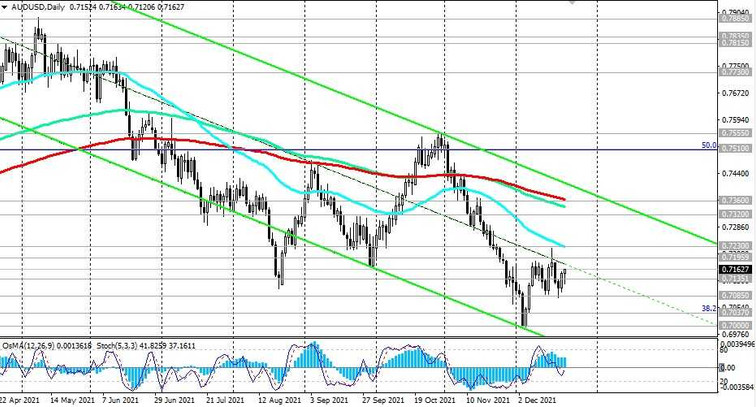Today at 13:30 (GMT) the final release of the estimate of the annual US GDP for the 3rd quarter will be published. Although, these data are one of the key (along with data on the labor market and inflation) for the Fed in terms of its monetary policy, and have a fairly strong impact on the market, nevertheless, since this is the final estimate, and it is expected with the same value (+2.1%) as the second, most likely it will not have a strong impact on the market.
By the way, the first preliminary forecast for the 3rd quarter of 2021 was +2.5%, after an increase of +6.7% in the 2nd quarter, +6.4% in the 1st quarter of 2021. Despite the slowdown in growth, the US economy is expected to grow by +5.5% in 2021. This forecast was given by the Fed economists last week, when the December meeting of the US central bank ended. In the next 2022, US GDP is expected to grow by +4%, which is higher than the previous September forecast of +3.8%. The growth rate of the American economy in the long term is expected to remain at +1.8%.
This is a fairly high growth rate, comparable to or higher than in some other economically developed countries and regions. For example, GDP growth in the Eurozone this year is expected to be +5.1%, +4.2% in 2022, +2.9% in 2023 and +1.6% in 2024. This was announced by the head of the ECB Christine Lagarde at a press conference following the bank's meeting last week.
If we turn to statistics on the economic state of, for example, Australia, then in this country in the 3rd quarter the economy contracted by -1.9%, since lockdowns were in effect for more than half of the country's population. The economy is recovering in the fourth quarter and the data shows strong labor demand as well as rapid growth in retail sales, driven by large consumer savings in more than three months of lockdowns. However, due to prolonged lockdowns in large states caused by the COVID-19 pandemic, as well as a jump in unemployment, the Australian economy may not grow in 2021.
By many parameters and economists' estimates, Australia is already in recession as the pandemic is having a negative impact on economic activity in key states.
At a meeting in early December, the Reserve Bank of Australia left the key rate at 0.1%, noting that the conditions necessary for its increase would take some time. The bank also expressed concern about the spread of the omicron strain of the coronavirus. "The discovery of the omicron strain is a new source of uncertainty, but it is unlikely to undermine the economic recovery", said RBA Governor Philip Lowe. "The economy is expected to return to its pre-crisis trajectory in the first half of 2022". Despite expectations of economic recovery, it seems that some time will pass before the first since 2010 increase in interest rates.
“The board will not raise the key rate until inflation is firmly in the 2% -3% range", Lowe said. “It will require labor market strength to drive substantially higher wage growth than it is now. This will likely require for a while, and the board is ready to be patient".
However, many economists expect the bank to cut back on its bond purchases at its next meeting in February. The central bank may completely abandon quantitative easing amid a rapid economic recovery and persistent inflationary pressures. "At a meeting in February, the board will discuss the bond buying program", Lowe said. Strengthened after the RBA meeting (December 7) expectations regarding the curtailment of the quantitative easing program supported the Australian dollar. It strengthened in general on the foreign exchange market, including against the US dollar. As of this writing, AUD / USD is traded near 0.7162 mark, up 37 pips to this month's opening price.
Meanwhile, the US dollar is weakening, and many economists believe that it may remain under pressure until the end of the year, as many market participants take profits by closing long positions on the dollar.
In this regard, the growth of AUD / USD may continue towards the mark of 0.7200, but it will probably be problematic for the pair to break through the resistance level 0.7230 by the end of this year.

At the beginning of next year, USD growth is likely to resume, as the different directions of the monetary policies of the Fed and other central banks of the countries with the largest economies will come to the fore. Higher interest rates and the course for further tightening of the FRS monetary policy will provide significant support to the US dollar.





